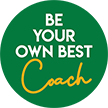Remember the stories of Problem Paul and Solution Sally that we recently shared with you?
In Sally’s story, we introduced you to Y-PET (You, People, Environment, Things), our framework for change that gives you a systematic and deliberate way to manage the many factors that help you build and apply your self-leadership muscles.
Sally used Y-PET to do a thorough review of what helped her nail her best successes. She examined each element of Y-PET in detail:
YOU: Her values, purpose, goals, strengths, and skills
PEOPLE: People who cheered her on and supported her; people who served as good models for her; and those who mentored her
ENVIRONMENT: Working environment she created to help her concentrate, minimize distractions, and maximize her productivity--from light, temperature, sound, space, smells, and aesthetics--as well as her digital environment
THINGS: Tools, systems, and processes she used; plus, the little rewards she gave herself as she hit milestones along the way
Conversely, Problem Paul got tied up in knots, procrastinated, and ended up a wreck after pulling an all-nighter to get his work done.
Although Paul and Sally had some things in common, like being in the same stage of their careers and hoping for the same kind of growth potential and recognition, there were big differences in how they operated.
Those differences were reflected in how they used the many resources available to them. Those resources include their own sense of their values, purpose, and capabilities; their relationships with coworkers, supervisors, mentors, and family and friends; the tools and techniques, and systems and processes they put into practice.
But one of the biggest differences that affected virtually everything they did was their mental model.
What’s a mental model?
All of us create mental models about how the world works, who we are in the world, and what is likely to happen in the future based on our past. Mental models also generate the stories we tell ourselves about ourselves to help us make meaning of our lives.
That’s the power of human thought, memory, and imagination.
Kate McLean, a professor of social psychology at Western Washington University says that each of us walks around with a story that we personally authored, often without us even realising it. The stories we tell about ourselves “reveal ourselves, construct ourselves, and sustain ourselves through time.”
In other words, we are our stories.
Stories come in several forms. As we said, stories are created automatically inside our heads. But stories also are a social phenomenon: It’s not only what we communicate to others. It’s also what we take in, accept, and embrace from others. And those stories can seep in consciously or even unconsciously.
The problem is that the stories we create, the stories we take in from others, and the generalizations we make based on our mental models often are flawed. (Remember the negativity bias we talked about in Problem Paul?)
We mistake our mental models as reality and embrace our stories as truth.
The result?
Those stories block us from not only achieving our dreams, but from even dreaming in the first place.
The idea that our fixed (and flawed) ideas are what hold us back is reflected in the words of Edward Sapir, one of the most important developers of the field of linguistics and anthropology in the US. As far back as the early 1900s, he wrote, "What fetters the mind and benumbs the spirit is ever the dogged acceptance of absolutes."
But we don’t have to be stuck in Sapir’s “dogged acceptance of absolutes.”
The good news is that there is an alternative.
When it comes to our stories, there is no absolute, unchangeable truth. Just as we “write” our stories, we can rewrite them, too.
In fact, if we want to enjoy the kind of career that we aspire to and live the life we dream about, it’s not just good to do. It’s a must.
How do you do that? How can you change your life narrative, “rewrite” your story?
Interestingly, the ability to write (or rewrite) your life story is closely tied to your self self-leadership skills, which includes self-awareness and self-management.
When you are self-aware, you recognize the factors that shape your beliefs, thoughts, feelings, and reactions to other people and situations. You also know how your own needs, biases, and values affect the decisions you make. These all go into the “what” of your story.
With good self-management, you manage and channel your emotions in useful ways so you help, not harm, yourself or others. You stay calm and clear-headed in stressful situations and modify your thinking in the face of new information and realities. This is the “how” of your story.
So, with good self-awareness and self-management, the stories you craft have the potential to change both your life and the world.
As Michael Margolis, an entrepreneur and educator who works with some of the world's biggest and most successful companies, says: "The stories we tell literally make the world. If you want to change the world, you need to change your story.”
So how do you change your story?
One way to get a grip on your own story, to tell it the way you really want, is to actually write it down.
But here’s the catch: A lot of folks think of writing anything beyond a shopping list as a brutal exercise that usually screeches to a dead stop with writer’s block, like when they had to write for school. Or, they get super self-conscious, thinking they have to reveal their deepest, darkest secrets . . . with good spelling and punctuation.
Not true!
Decades of research around the world shows that a very specific kind of writing can be transformative.
We’ve refined and expanded this approach to transformational writing. We call our method Solution-focused StoryCrafting. It takes the best practices from therapeutic journaling and marries them to evidence-based interventions for behavior-change and personal transformation.
Solution-focused StoryCrafting takes you on a systematic journey that leaves behind narratives saturated with problems, failure, and frustration. It replaces them with a life story based on hope, confidence, and competence.
At the end of your journey, you walk away with a detailed map you can use to become your own best coach with the kind of self-leadership skills that enable you to accelerate your career and boost your wellbeing.
Click here for a very small sample of the Solution-focused StoryCrafting method.
P.S. If you're just joining or want to catch up, we'll include links to all the previous posts on the upcoming fall cohort of Be Your Own Best Coach:


